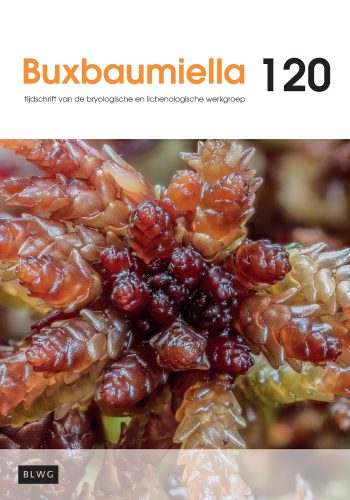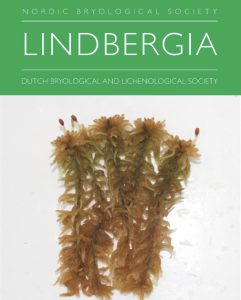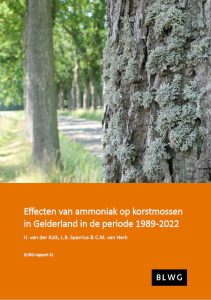Publicaties van de BLWG
Buxbaumiella
De BLWG geeft driemaal per jaar het tijdschrift Buxbaumiella uit. In dit tijdschrift staan artikelen over ecologisch en floristisch onderzoek aan mossen en korstmossen. Buxbaumiella verschijnt sinds 1972 als opvolger van Buxbaumia (1947-1970).
ISSN 0166-5405
Eindredactie: Dick Kerkhof

Inhoud Buxbaumiella en Buxbaumia
Buxbaumiella 134 – 2025 – September
- De eerste Nederlandse vondst van Scytinium magnussonii (schuursponszwelkorst) op de Defensiedijk in Bemmel
(The first record of Scytinium magnussonii in the Netherlands) – A.A.A.W. Janssen & H. van der Kolk (1–7) - Bryologisch verslag van het zomerkamp 2024 in het Drawa Nationaal Park in Polen
(Bryological report of the summer camp 2024 in the Drawa National Park in Poland) – J. Koopman, H. Waltje, S.M. Bantjes Arostegui & G. van Wirdum (8–21) - Xanthomendoza in Nederland opgehelderd: drie genetisch en morfologisch onderscheidbare soorten
(The genus Xanthomendoza in the Netherlands) – H. van der Kolk, A. van Wingerden & L. Verboom (22–33) - Poedergeelkorst (Candelariella reflexa s.lat.) en vals dooiermos (Candelaria concolor) opgesplitst
(Taxonomic revision of Candelariella reflexa and Candelaria concolor in the Netherlands) – H. van der Kolk (34–47) - In memoriam Ben van Zanten
(In memoriam Ben van Zanten) – B. van Tooren, D. Blok & H. During (47–53) - In memoriam Fred Bos
(In memoriam Fred Bos) – Rudi Zielman (54–55) - Verenigingsnieuws – - (55–57)
- Activiteitenoverzicht – - (57–58)
- Vragen aan... Saskia Bantjes Arostegui – - (59–60)
Lindbergia
Lindbergia, wetenschappelijk Open Access tijdschrift op het gebied van bryologie en lichenologie in samenwerking met de Nordic Bryological Society
Oudere nummers zijn in te zien via JStor
ISSN 0105-0761
Eindredactie: Nils Cronberg

BLWG-rapporten
Sinds 2002 geeft de BLWG een eigen rapportenserie uit met resultaten van onderzoek door medewerkers en/of vrijwilligers.
Rapporten bekijken en downloaden
ISSN 1571-5108

